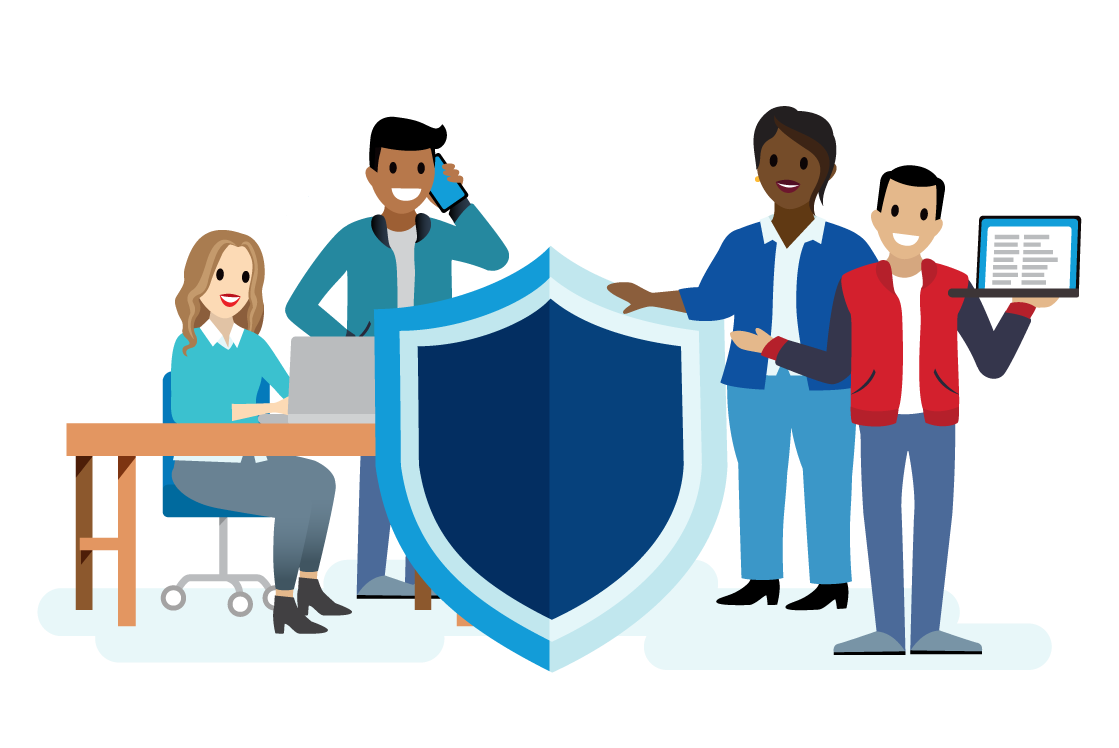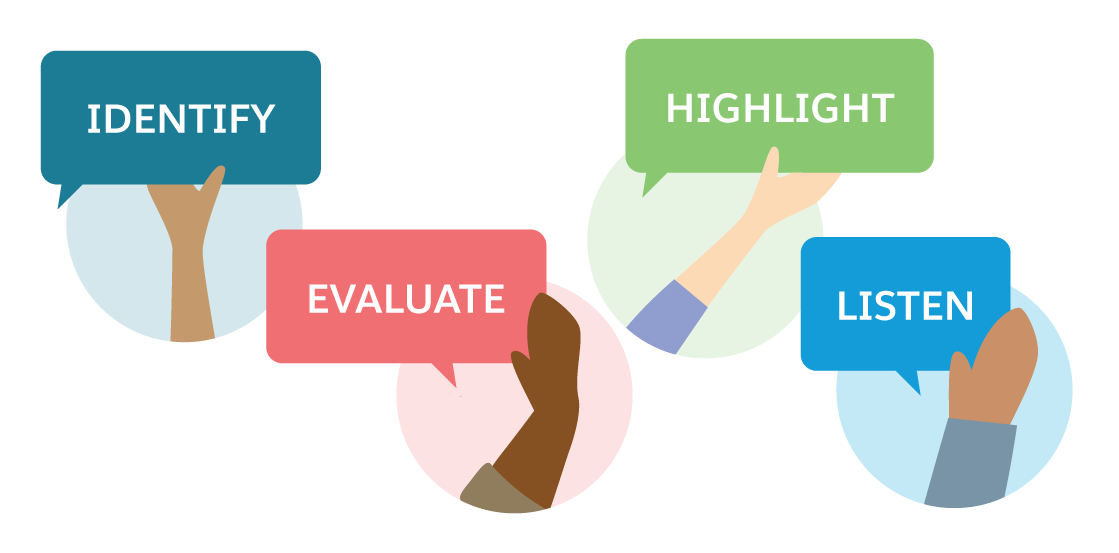Become a Human Firewall
Learning Objectives
After completing this unit, you’ll be able to:
- Define a human firewall.
- Discuss human-centered security practices.
The birth of the internet produced digital explorers. These explorers were curious minds who, without needing explicit permission, accessed networks and systems to uncover new ways of making digital products and applications more effective and efficient. Their actions weren't malicious. These “hackers” were driven by a desire to learn and unlock technology’s potential. However, this dynamic shifted as the internet became part of our personal lives and the fabric of business and commerce.
Where network boundaries once didn’t exist or weren’t considered problematic, they now do exist–and crossing them without explicit written permission is a crime. What began as a desire to learn and explore, has transformed into unauthorized access–regardless of intent.
But before we dive further into this shift, let’s revisit important aspects from the previous unit.
Knowledge Check
Ready to review what you’ve learned? The following knowledge check isn’t scored—it’s just an easy way to quiz yourself. To get started let’s review what you’ve learned by reading the scenario then matching the description of each situation with the corresponding element of digital body language. When you finish matching all the items, click Submit to check your work. To start over, click Reset.
The First Line of Cyberdefense
The shift occurred when businesses and organizations began claiming ownership of their digital assets and effectively placing “no trespassing” signs at the boundaries of their networks. This redefined the perception of a hacker’s technical skills and their unfettered use of those skills in cyberspace. As a result, cybersecurity professionals have become essential along with technologies designed to help businesses and organizations secure and protect their digital space. However, technology alone can't effectively prevent all unauthorized access.
Malicious hackers continue to focus less on technical vulnerabilities and more on exploiting human vulnerabilities to gain unauthorized network access. This makes the concept of a “human firewall” essential because our decisions and behaviors are often the first line of defense. For example, no technical control can completely block phishing emails. When these emails bypass security filters, critical thinking and informed decision-making become the critical layer of defense. 
A technical firewall is a hardware device or software application that monitors and controls incoming and outgoing network traffic. It acts as a barrier between trusted and untrusted networks, blocking malicious traffic to protect data. Similarly, a human firewall is about creating a line of defense through the use of good security instincts, habits, relationships and decisions. It’s about being aware and cautious. Here are some examples of behavioral habits that help minimize our risk from cyberattacks.
- Pausing when an email from your “boss” demands sensitive information
- Questioning and researching links or messages that feel slightly off
- Recognizing common attack tactics in the tone of messages, such as a sense of urgency or pressure to act quickly
It’s primarily the choices that humans make that either strengthen or weaken overall cybersecurity.
While many experts and even research suggest that humans are the weakest link in cybersecurity, there are those who offer a different perspective that supports the idea of the human firewall. Among those are Dr. Jessica Barker and Rachel Tobac.
Dr. Jessica Barker
Dr. Jessica Barker, is an award-winning global leader in the human side of cybersecurity. She challenges the idea of humans as the “weakest link” and advocates for seeing them as intelligent, adaptable, and the proactive side of security. Here are some of her key ideas to help organizations build a positive and effective cybersecurity culture:

- Identify your baseline and existing culture around cybersecurity.
- Evaluate whether employees are receiving clear and consistent messaging about cybersecurity.
- In phishing simulations, avoid shaming those who click malicious links. Instead, highlight positive behaviors.
- Make security teams approachable by listening, taking feedback, and offering nonjudgmental guidance.
Dr. Barker emphasizes empathy, clarity, and positive reinforcement in workplace and home cybersecurity. Her approach centers on listening, understanding behaviors, and fostering collaboration to create a culture where security is a shared responsibility.
Rachel Tobac
Rachel Tobac, CEO of SocialProof Security, is a social engineering expert and defensive hacker (also known as a white-hat hacker), who hacks companies with permission to show them where their vulnerabilities are. She achieves all of this without the use of technical hacking. Here are some of her key ideas for organizations regarding strategies for promoting critical thinking to prevent social engineering attacks and resilience if an attack is successful.
- Train employees to recognize pretexts (for example, emotional stories or stories that attackers use to manipulate decision-making).
- Encourage employees to be mindful of what they post on social media.
- Avoid blaming employees for falling for scams; instead, create a culture where reporting and learning from incidents is encouraged.
- Build trust with employees.
Rachel’s core message is to stress the need for a human-first approach to cybersecurity.
The future of cybersecurity lies in redefining our approach to people. Rather than seeing humans as liabilities, we should recognize their potential to be the strongest link in our security chains. By taking a human-first approach, we enable collaboration, progress, trust, and security in cyberspace.
Practical Applications and Tools
Here are platforms and tools where you can practice good decision-making to counter social engineering, improve stress responses, and better understand your digital habits and knowledge risk.
-
Can You Spot When You’re Being Phished: A free game designed to teach individuals how to identify phishing attempts in a fun and interactive way.
-
Have I Been Pwned: Allows you to check if your email or phone number has been exposed in a data breach.
-
National Cyber Security Alliance (NCSA): Offers free guides and tools for improving personal cybersecurity practices.
These free and open-source tools provide practical ways to analyze and improve your habits, making it easier to identify and mitigate risks from social engineering.
Now that you’re at the end of this module, one thing should be clear: Cybersecurity is as much about understanding people as it is about understanding technology. Our digital body language—those subtle patterns in how we interact online—can either protect us or expose us to risks. Social engineering thrives on these patterns, using curiosity, trust, and urgency to manipulate decision-making. But rather than labeling these human traits as weaknesses, we’ve learned that they are simply part of what makes us human.
The key lies in managing knowledge risk and gathering enough information to enable better decision-making. Tools and strategies that align with our natural behaviors, like two-factor authentication and password managers, show that security doesn’t have to feel like a burden. Instead, it can work seamlessly with how we live and work online.
Ultimately, the first and most important line of defense is us. By recognizing our digital habits and making informed choices, we become a critical part of our own security. This understanding of human behavior strengthens our defenses and lays the foundation for a more resilient, human-centered approach to cybersecurity.